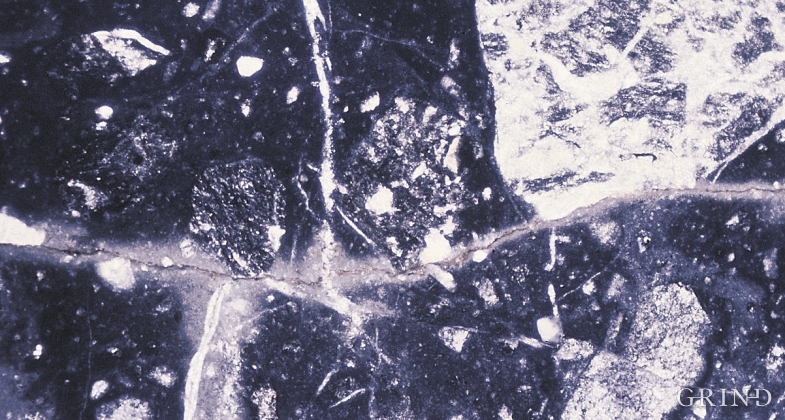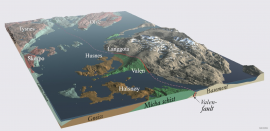Published: 20.07.2015 | Author: Haakon Fossen
Ground up bedrock in the Valen Fault, seen under a microscope. The pictured transect is 4 millimetres wide. (Haakon Fossen)
The faults that lie in a north-northwest direction determine the trend of many of the fjords and straights along the west coast. East of Husnes one of these faults extends onto land. There is a notable divide between the bedrock's granite schists to the east and the mica schists and phyllite to the west. The divide, which is known as the Valen Fault, goes from Valen to Langgota. The fault stretches further in both directions, but it is here that the biggest movement occurred. The Halsnøy side has dropped down up to 500–1000 metres along this division. We know that earthquakes seldom result in movements in the bedrock of more than a metre or two. We can therefore presume that the movement along the Valen Fault is a result of hundreds of earthquakes up through the ages. It can still be active, as the earthquake activity in Sunnhordaland is witness to. The fault itself, with crushed and ground up bedrock, is visible by a stream along the road south of Langgota, ca. 200 metres north of the first intersection on the way to Husnesvågen, but it is difficult to find.
- Holtedahl, H. 1975. The Geology of the Hardangerfjord, West Norway. Norges Geologiske Undersøkelse 323.




